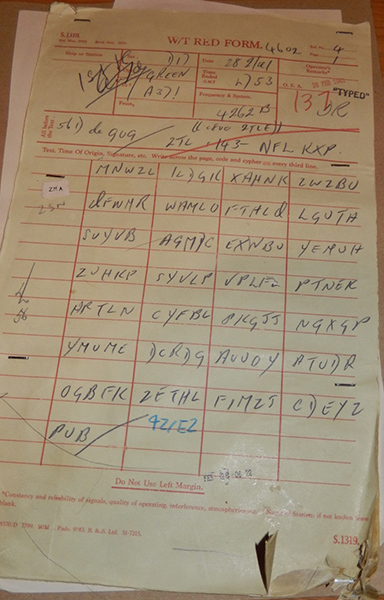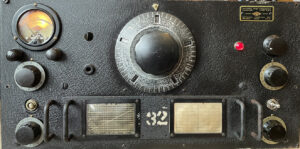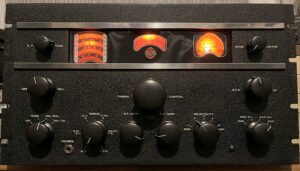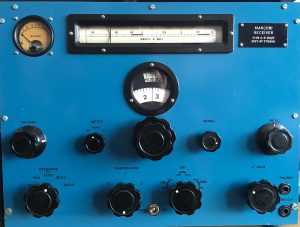The Y Service:
The Y Service was a network of British signals intelligence collection sites known as Y Stations. The network played a vital role in wartime communications monitoring. Operated by various agencies including the Army, Navy, Royal Air Force and the Foreign Office (including MI6 and MI5), these stations formed a nationwide system for intercepting and analyzing enemy communications. Civilian organizations like the General Post Office and the Marconi Company also supported the effort by providing receiving stations on land and at sea.
The term Y originated from Wireless Interception (WI). Each Y Station served one of two main functions: intercepting radio transmissions or determining their point of origin. Some signals were analyzed locally while encrypted messages were forwarded for decryption and interpretation. Initially, this processing was done in London but, during the Second World War, it was centralized at the Government Code and Cypher School at Bletchley Park in Buckinghamshire. At its peak, the network operated more than 600 receiving sets.
Radio Amateurs WWII:
In 1939, at the outbreak of World War II, many countries suspended all amateur radio licences. In Britain, this ban remained in place until 1946. As a result, radio enthusiasts found themselves without a hobby, until MI5 stepped in with a new mission. The intelligence agency formed the Radio Security Service (RSS), a covert unit designed to harness the skills of amateur radio operators in monitoring enemy transmissions.
Around 1,500 licensed radio amateurs were recruited in Britain through the Radio Society of Great Britain. These individuals were ideal for the job because they were skilled in operating and maintaining shortwave equipment and fluent in Morse code. Before beginning their work, each volunteer was required to sign the Official Secrets Act and was formally designated as a Volunteer Interceptor, known as a VI.
Initially, these VIs were tasked with detecting enemy spy transmissions within Britain as well as intercepting German radio traffic. Much of the intercepted communication was in Morse code, including plain language and Enigma-encrypted messages. The radio amateurs would search the bands for suspicious signals and send the encrypted text they’d copied off for analysis. They played a quiet but vital role in Britain’s wartime intelligence efforts. The Enigma-enciphered messages sent by German radio operators in Morse code were picked up by the intercept stations. The information was then sent either by motorcycle despatch riders or via teleprinter to Bletchley Park where they found their way to the codebreaking huts.
The VIs were mostly working men of non-military age, using their own receivers. Their transmitters had been impounded on the outbreak of war. Being of non-military age, they must have been pleased to be able to assist in the war effort. They were ordered to ignore commercial and military traffic and concentrate on more elusive transmissions. Each VI was given a minimum number of intercepts to make each month. Reaching that number gave them exemption from other duties, such as fire watching.
As a licensed radio amateur, I might have been recruited as a Volunteer Interceptor. I can see myself in my radio shack tuning in to Morse code signals and filling out the Red Form, shown below, with the date, time, frequency and the text I’d received. My wife and family members wouldn’t have been told about the secret work going on in my radio room or my shed down the garden. They would have assumed that I was communicating with other licenced amateurs, as usual.
The W/T Red Form:

The National HRO Receiver:
During World War II, the National HRO communications receiver gained widespread use as the preferred equipment for various allied monitoring services, including the Y Service stations  associated with the code-breaking operations at Bletchley Park: Station X. It was an amazing receiver using cutting edge technology back in the day. Britain initially purchased an estimated 1,000 HRO receivers. In total, approximately 10,000 HRO receivers were utilised for intercept operations, diplomatic communications, shipboard use, shore stations and clandestine activities. I wonder where those 10,000 receivers are now? At least I own one of them!
associated with the code-breaking operations at Bletchley Park: Station X. It was an amazing receiver using cutting edge technology back in the day. Britain initially purchased an estimated 1,000 HRO receivers. In total, approximately 10,000 HRO receivers were utilised for intercept operations, diplomatic communications, shipboard use, shore stations and clandestine activities. I wonder where those 10,000 receivers are now? At least I own one of them!
The RCA AR88D Receiver:
 I’m not sure whether the AR88D was used by radio amateurs to intercept messages. I believe the receiver was first manufactured in 1941 so it was around during the war years. They must have been very expensive so I doubt that many amateurs could afford such a luxury receiver. Were they even on sale to the general public at that time? I’ve heard it said that Alan Turing’s preferred interception receiver was the AR88D.
I’m not sure whether the AR88D was used by radio amateurs to intercept messages. I believe the receiver was first manufactured in 1941 so it was around during the war years. They must have been very expensive so I doubt that many amateurs could afford such a luxury receiver. Were they even on sale to the general public at that time? I’ve heard it said that Alan Turing’s preferred interception receiver was the AR88D.
The Marconi CR100 Receiver:
The Marconi CR100 receivers were used by the British Forces during World War II: the Army, Royal Navy and The Royal Air Force. They were widely used for the Y Stations that intercepted  enemy radio messages for decryption by Bletchley Park. Many people will remember using one of these receivers whe they came onto the govermnet surplus market. For many short wave listeners and radio amateurs, they were a good receiver at a reasonable cost. I own a Marconi CR100 which I use most days. Apparently, the CR100 was often seen as equal to the HRO and AR88 receivers on lend lease from the USA. Owning all three receivers, I believe the AR88D to be the best by far.
enemy radio messages for decryption by Bletchley Park. Many people will remember using one of these receivers whe they came onto the govermnet surplus market. For many short wave listeners and radio amateurs, they were a good receiver at a reasonable cost. I own a Marconi CR100 which I use most days. Apparently, the CR100 was often seen as equal to the HRO and AR88 receivers on lend lease from the USA. Owning all three receivers, I believe the AR88D to be the best by far.
Coast stations such as Niton Radio on the Isle of Wight used CR100 receivers up until the lare 1950s.
More about Bletchley Park.
